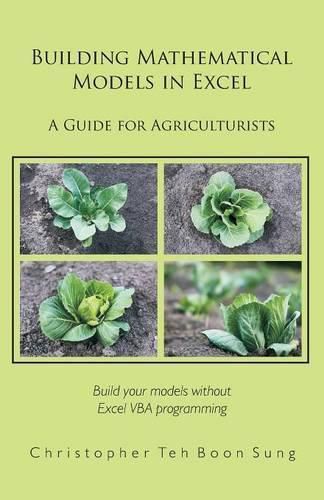Readings Newsletter
Become a Readings Member to make your shopping experience even easier.
Sign in or sign up for free!
You’re not far away from qualifying for FREE standard shipping within Australia
You’ve qualified for FREE standard shipping within Australia
The cart is loading…






This title is printed to order. This book may have been self-published. If so, we cannot guarantee the quality of the content. In the main most books will have gone through the editing process however some may not. We therefore suggest that you be aware of this before ordering this book. If in doubt check either the author or publisher’s details as we are unable to accept any returns unless they are faulty. Please contact us if you have any questions.
This book is for agriculturists, many of whom are either novices or non-computer programmers, about how they can build their mathematical models in Microsoft Excel. Of all modeling platforms, spreadsheets like Excel require the least proficiency in computer programming. This book introduces an Excel add-in called BuildIt (available for free as download) that shields users from having to use Excel’s VBA (Visual Basic for Applications) programming language and yet allows agriculturists to build simple to large complex models without having to learn complicated computer programming techniques or to use sophisticated Excel techniques. This book first discusses how BuildIt works and how it is used to build models. Examples range from the simple to progressively more complex mathematical models. Ultimately, readers are taught how to build a generic crop growth model from its five core components: meteorology, canopy photosynthesis, energy balance, soil water, and crop growth development. Ultimately, agriculturists will be able to build their own mathematical models in Excel and concentrate more on the science and mathematics of their modeling work rather than being distracted by the intricacies of computer programming.
$9.00 standard shipping within Australia
FREE standard shipping within Australia for orders over $100.00
Express & International shipping calculated at checkout
This title is printed to order. This book may have been self-published. If so, we cannot guarantee the quality of the content. In the main most books will have gone through the editing process however some may not. We therefore suggest that you be aware of this before ordering this book. If in doubt check either the author or publisher’s details as we are unable to accept any returns unless they are faulty. Please contact us if you have any questions.
This book is for agriculturists, many of whom are either novices or non-computer programmers, about how they can build their mathematical models in Microsoft Excel. Of all modeling platforms, spreadsheets like Excel require the least proficiency in computer programming. This book introduces an Excel add-in called BuildIt (available for free as download) that shields users from having to use Excel’s VBA (Visual Basic for Applications) programming language and yet allows agriculturists to build simple to large complex models without having to learn complicated computer programming techniques or to use sophisticated Excel techniques. This book first discusses how BuildIt works and how it is used to build models. Examples range from the simple to progressively more complex mathematical models. Ultimately, readers are taught how to build a generic crop growth model from its five core components: meteorology, canopy photosynthesis, energy balance, soil water, and crop growth development. Ultimately, agriculturists will be able to build their own mathematical models in Excel and concentrate more on the science and mathematics of their modeling work rather than being distracted by the intricacies of computer programming.